Roma - Rome
|
|
|
| |
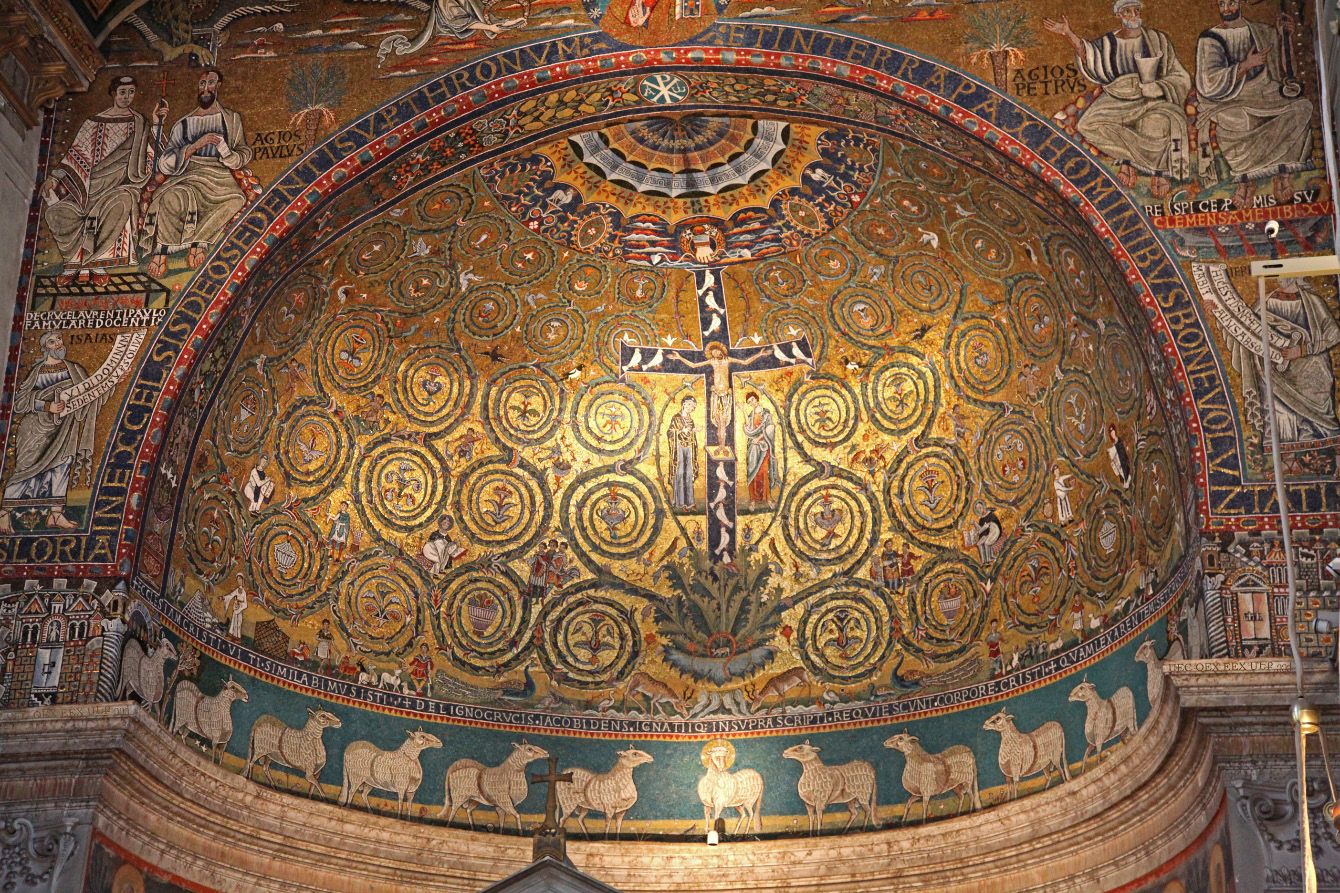 |
|
XII century apse mosaic above the high altar in the upper level Church, also 12th century, of three Churches built sequentially on this spot. This upper Church being the second basilica. The inscription reads:
|
| |
| ECCLESIAM CRISTI VITI SIMILABIMUS ISTI + DE LIGNO CRUCIS JACOBI DENS IGNATIIQ IN SUPRASCRIPTI REQUIESCUNT CORPORE CRISTI + QUAM LEX ARENTEM SET CRUS FACIT EE VIRENTE |
| |
| "We represent the Church of Christ as this vine, which the Law dries up but the Cross makes to be green, of the wood of the Cross and a tooth of James, as well as of Ignatius, rest in the above-delineated body of Christ" |
|
| |
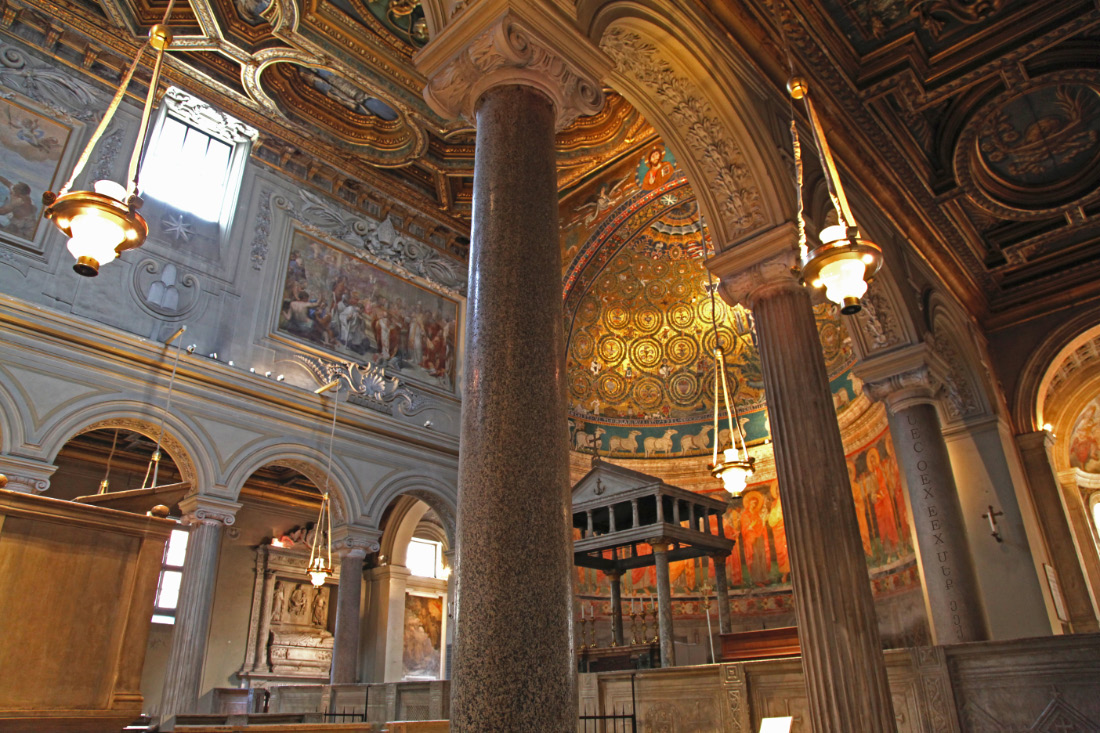 |
|
| |
| |
SANCTUS CLEMENS MARTYR HIC FELICITER EST TUMULATUS
HIC REQUIESCUNT CORPORA SS CLEMENTIS PAPÆ ET IGNATII |
|
| |
|
|
| |
"Saint Clement, martyr, is happily buried here, Here lie the bodies of Saints Clement and Ignatius." |
|
| |
|
|
The present, second basilica, in the upper of three levels. Under apse mosaic and the baldacchino, both 12th century,
the high altar containing the relics of Saint Ignatius of Antioch and of Pope Saint Clement I:
|
| |
Άγιος Πάπας Κλήμης Α΄ – Clemens I Romanus – Климент I – Pope Saint Clement I
Consecrated by Apostle Saint Peter, the Liber Pontificalis lists Saint Clement as the fourth pope (r. 92 to 99), the third successor after Peter, after Saints Linus and Anacletus/Cletus. Relics translated to the Basilica of Saint Clement by Saint Cyril c. 868. |
| |
|
|
| |
Ignatius Antiochenus – Ἰγνάτιος Ἀντιοχείας ο Θεοφόρος – Игнатий Антиохийский Богоносец – Saint Ignatius of Antioch, Theophorus (God bearing) (* c. 35 in Syria – Rome c. 98 - 117 † ), student of Apostle Evangelist Saint John, third Bishop of Antioch, after Saint Peter and Saint Evodius, and martyr by being feed to wild animals.. Relics translated to the Basilica of Saint Clement in 637. |
The present, second basilica, in the upper of three levels. Under apse mosaic and the baldacchino, both 12th century, the high altar containing the relics of Saint Ignatius of Antioch and of Pope Saint Clement I.
Άγιος Πάπας Κλήμης Α΄ -Clemens I Romanus - Климент I - Pope Saint Clement I
Consecrated by Apostle Saint Peter, the Liber Pontificalis lists Saint Clement as the fourth pope (r. 92 to 99), the third successor after Peter, after Saints Linus and Anacletus/Cletus. Relics translated to the Basilica of Saint Clement by Saint Cyril c. 868.
|
|
| |
|
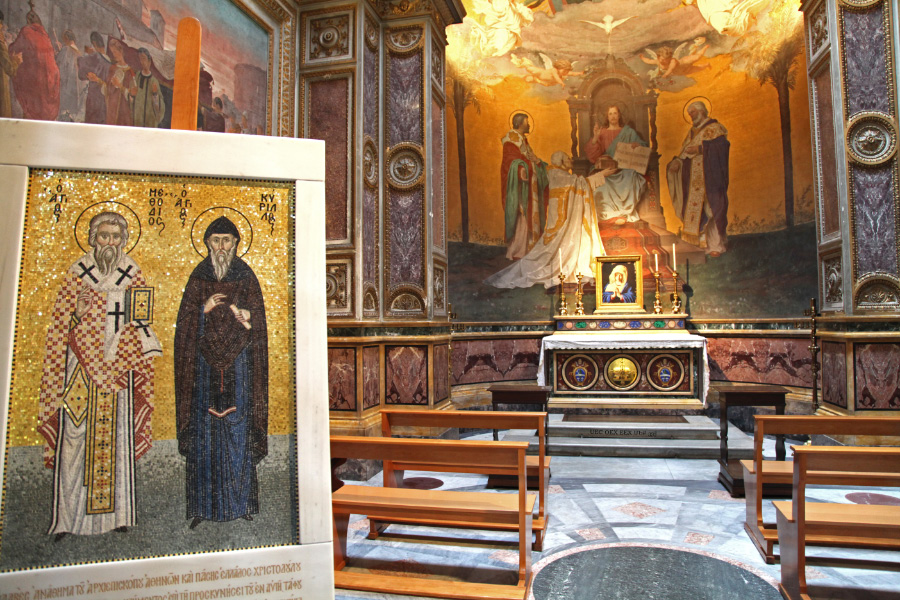
Basilica di San Clemente al Laterano - Chapel of SS Cyril and Methodius
|
| |
Perciò, fratelli miei carissimi e tanto desiderati, mia gioia e mia corona, rimanete saldi nel Signore così come avete imparato, carissimi! Esorto Evòdia ed esorto anche Sìntiche ad andare d'accordo nel Signore. E prego te pure, mio fedele collaboratore, di aiutarle, poiché hanno combattuto per il vangelo insieme con me, con Clemente e con gli altri miei collaboratori, i cui nomi sono nel libro della vita. Rallegratevi nel Signore, sempre; ve lo ripeto ancora, rallegratevi. La vostra affabilità sia nota a tutti gli uomini. Il Signore è vicino! |
|
| |
|
Filippesi 4:1-5 (eventuale riferimento a Papa San Clemente) |
|
| |
|
|
|
| |
Therefore, my brethren, whom I love and long for, my joy and crown, stand firm thus in the Lord, my beloved. I entreat Eu-o'dia and I entreat Syn'tyche to agree in the Lord. And I ask you also, true yokefellow, help these women, for they have labored side by side with me in the gospel together with Clement and the rest of my fellow workers, whose names are in the book of life. Rejoice in the Lord always; again I will say, Rejoice. Let all men know your forbearance. The Lord is at hand. |
|
| |
|
Letter of Saint Paul to the Philippians 4:1-5 (possible reference to Pope Saint Clement) |
|
| |
|
|
|
| |
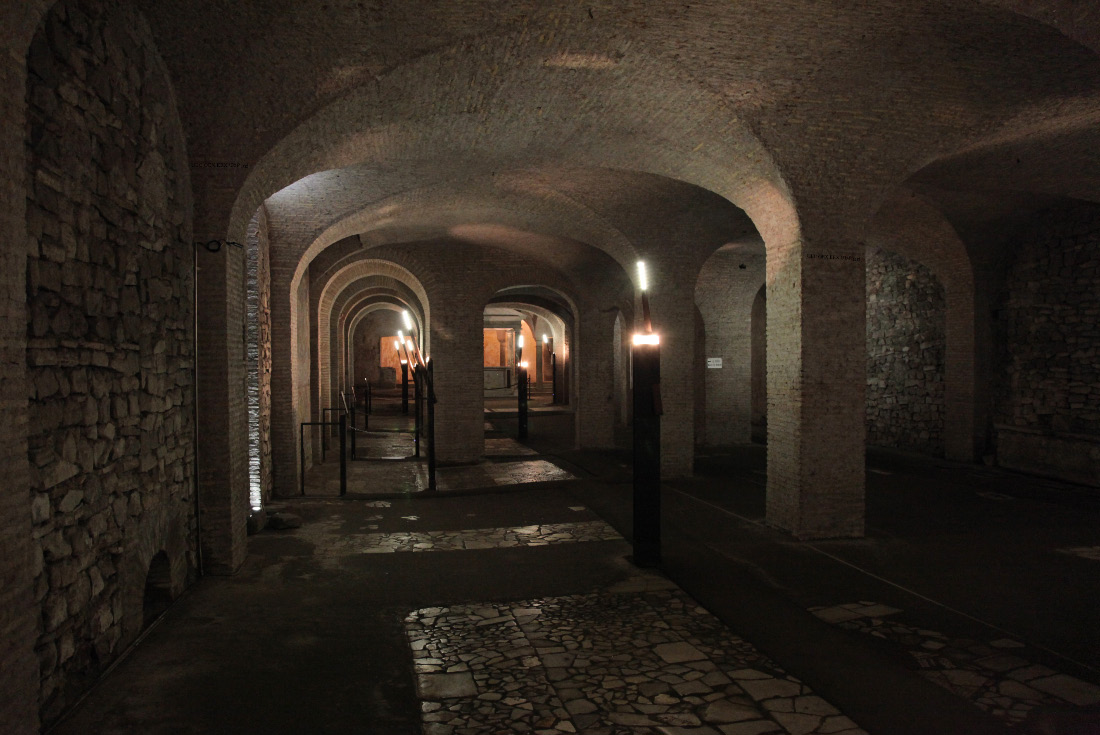 |
|
| |
This older, and therefore lower level, Church was built in the IV century after the end of the persecution of Christians under Emperor Saint Constantine the Great – Flavius Valerius Aurelius Constantinus Augustus (*27 February 272 – 22 May 337†), becoming a Basilica under Pope Siricius (r. December 384 – 26 November 399 †). But this lower Basilica is actually the middle level of three Churches built here. On a still lower level was a I/II century house Church built atop earlier structures destroyed during the Great Fire of Rome in 64 Anno Domini. The Christians meeting in this house Church during those difficult times of persecution, when people were Christians at the risk of life and limb because of holy conviction rather than for other reasons, formed a Christian community which by tradition was called titulus Clementis, likely named for the former owner of the house which served as the Church, possibly Titus Flavius Clemens, martyred in 95/96 AD, a cousin of the Flavian Emperors, one of whom, Domitian, had him killed. |
|
| |
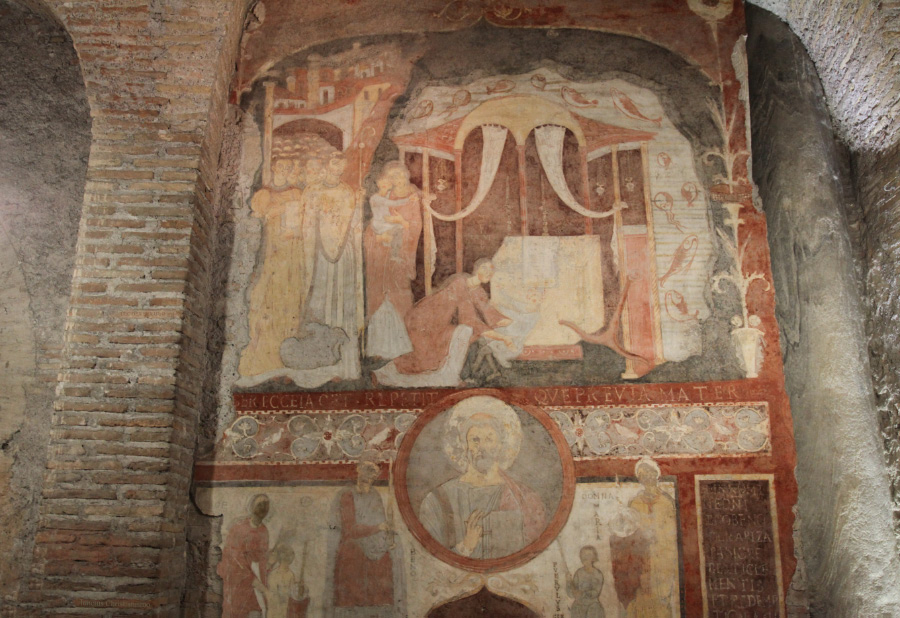 |
|
| |
In the lower, IV century, Church, the first Basilica, a fresco depicting the divinely built crypt for Pope Saint Clement, together with the anchor used to drown him, in the Black Sea off Inkerman on the Crimean Peninsula. Frescoes were added during VI VIII and IX century renovations to the lower Church, the then basilica. |
|
|
|
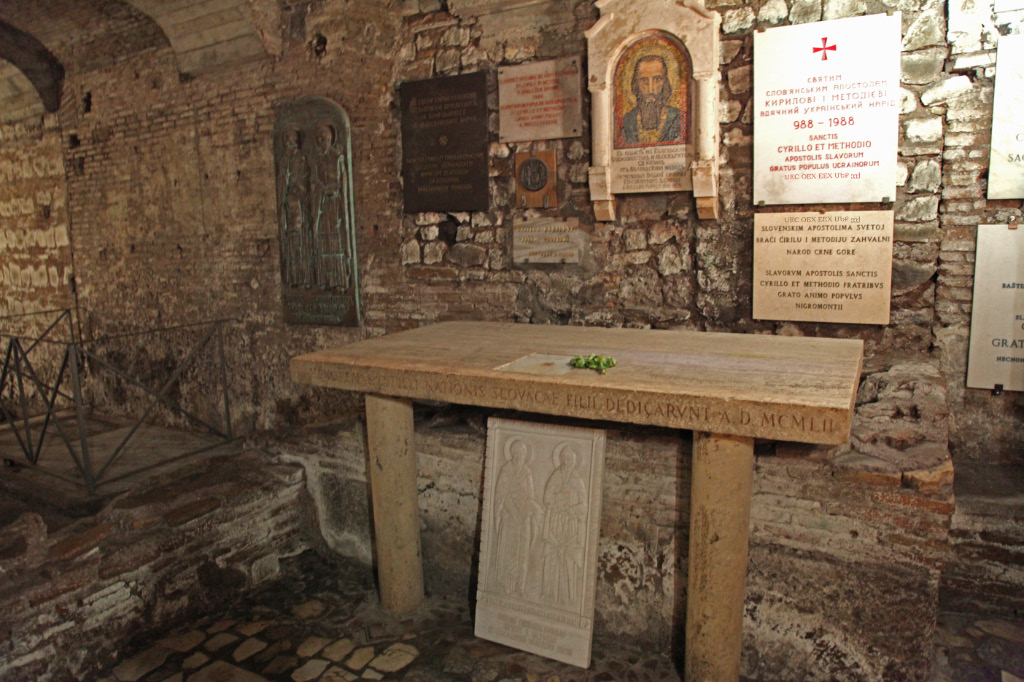 |
|
Άγιοι Κύριλλος – Sanctus Cyrillus – Saint Cyril – Свети Константин-Кирил Философ – Свети Кирил – Svatí Konstantin (Cyril) – Святий Кирило – Святой Кирилл
Basilica di San Clemente al Laterano – Altar to Saint Cyril in First Basilica. This first basilica occupies the middle of the three levels currently in existence.
Saint Jerome wrote of this Church in 392, and it continued to serve until the second basilica, on the upper most of the three levels was built c. 1099 to c. 1120.
Many book shelves are filled with informed speculation and actual history regarding the effects which flowed throughout the Church and Christendom
from the request of the brothers from Thessalonica, Saints Cyril (* c 826 - 14 February 869 N.S.†) and Methodius (* c. 815 - 6 April 885 N.S.†),
which was opposed by Theotmar, the Archbishop of Salzburg and bishop of Passau (who later died fighting Hungarians), but granted by
Pope Adrian II (* 792, r. from 14 December 867 – 14 December 872 †) to use the Slavic liturgy, rather than Latin,
(Note, about 1100 years before the Second Vatican Council, a circumstance much to the chagrin of some — not all — Traditionalist Catholics,
those who well understand that something went very wrong at and after Vatican II, though it seems beyond them to discern what:
Reconciliation in the truth of orthodox-catholic Christianity with the Orthodox and with the Oriental Orthodox = good; but
False Ecumenism and destructive accommodation with Modernists, Marxists, Masons, Talmudim and Muslims = bad.) |
|
|
|
|
| |
|
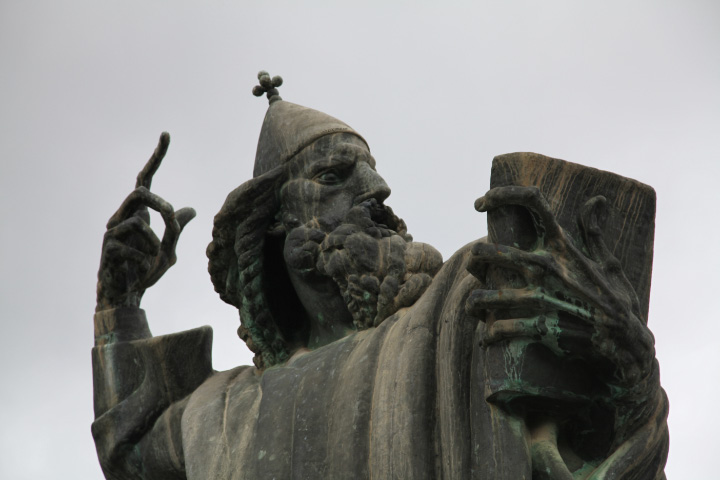 |
| |
|
Not many decades later Bishop Gregory of Nin – Grgur Ninski (bishop from c. 900 to 929) — also a champion of the use of the Slavonic language and the Glagolitic alphabet as the liturgical language in preference to Latin — had rather less success under Pope Leo VI (r. June 928 to February 929 †) and the Roman-Byzantine politics of that day. Detail from bronze in Split, Croatia by Ivan Mestrovic. |
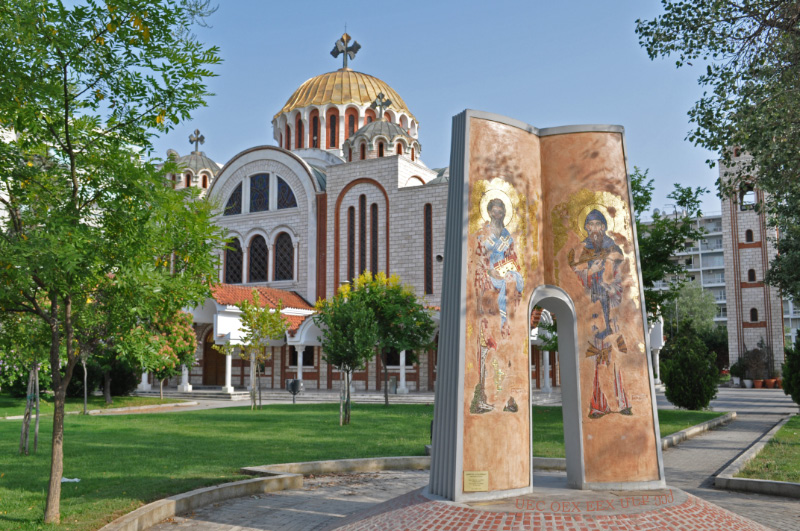 |
|
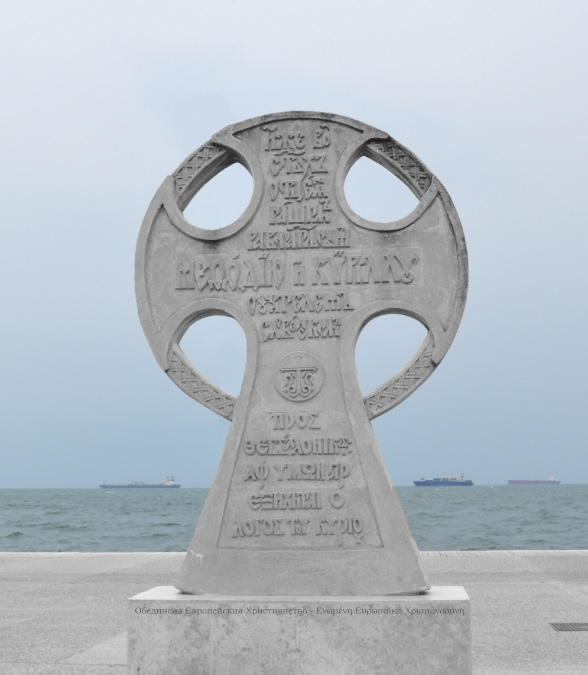 |
| Θεσσαλονίκη – Thessaloniki, Κύριλλος καὶ Μεθόδιος – Кѷриллъ и Меѳодїи – Cyrillus et Methodius |
... on the shores of the Aegean in Thessaloniki, Bulgarian thanks to SS. Cyril and Methodius. |
|
|
|
| |
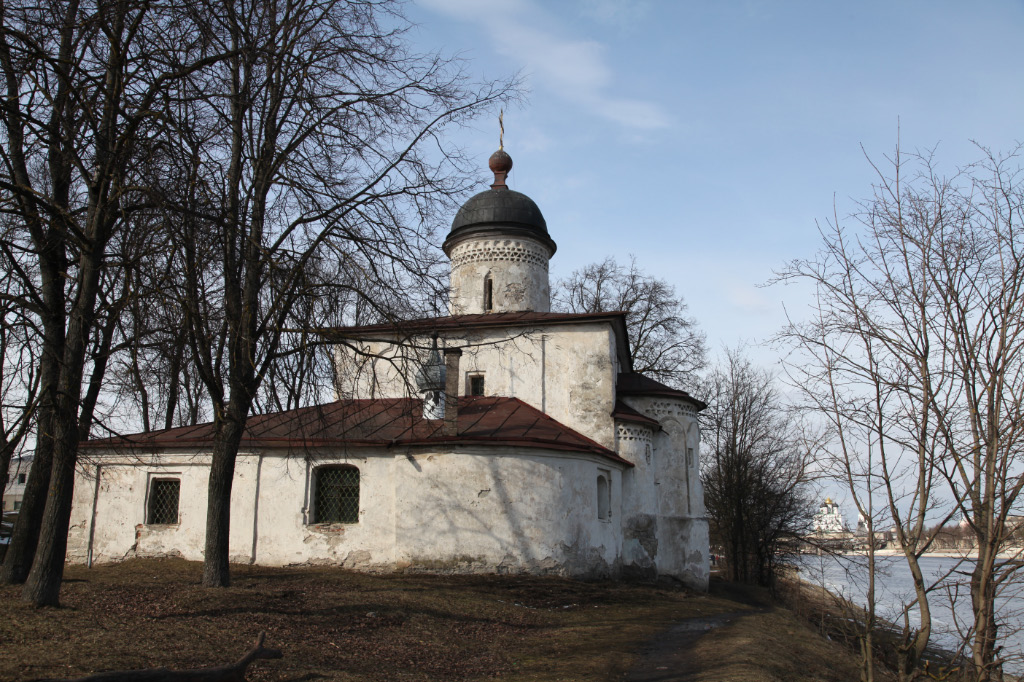 |
|
| |
Perhaps dating even to the first half of the XIV century (see «Историческая топография Пскова в XIV-XV веках» 1985 г.), pictured is the Church of Pope Saint Clement in Pskov – Храм Климента Папы Римского в Пскове, dedicated also to Archbishop of Alexandria and martyr, Saint Peter of Alexandria (311 †. ) Please forgive me if I am being childish. The unresolved issues are many and serious, but I experience a wave of joy everytime I see a Supreme Pontiff so honored in Russia. This church I stumbled onto on Holy Saturday of 2016, according to the Catholic Calendar. To the viewers right and hidden in the trees one can see, at about 2 kilometers' distance and across the Velikaya River–the Great River–Река Великая, the Trinity Cathedral – Троицкий Собор inside the XV century Pskov Kremlin – Псковский Кром. |
|
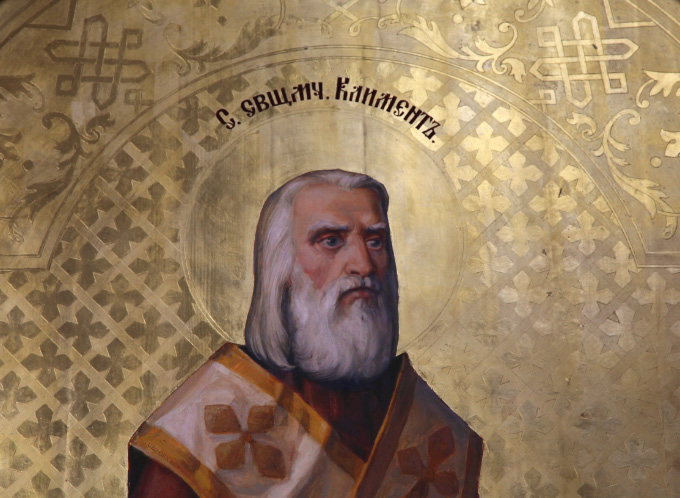 |
|
|
| Pope Saint Clement, icon in Korsun on the Crimean Peninsula |
|
|
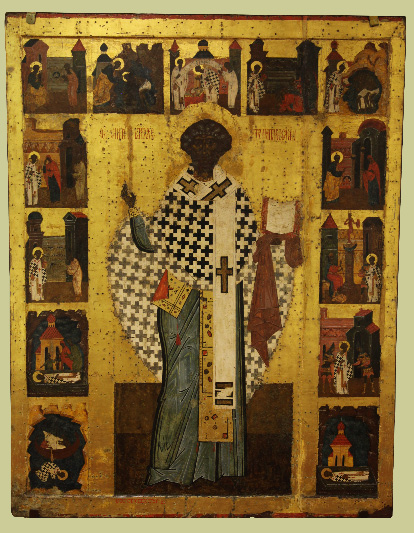 |
|
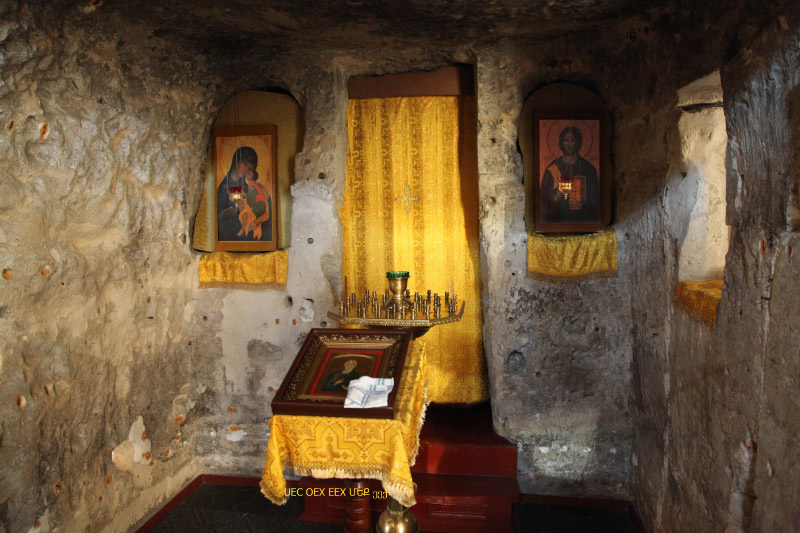 |
Русское православие честь и почитание Папу.
Russian Orthodoxy honoring and venerating a Pope.
XVI century icon from Архангельская Область – Arkhangelsk Oblast, once in the Никольская Церковь – Church of Saint Nicholas (1763) in Нёнокса – Nyonoksa. |
|
|
Inkerman Cave Monastery of Saint Clement, Inkerman, Crimean Peninsula
|
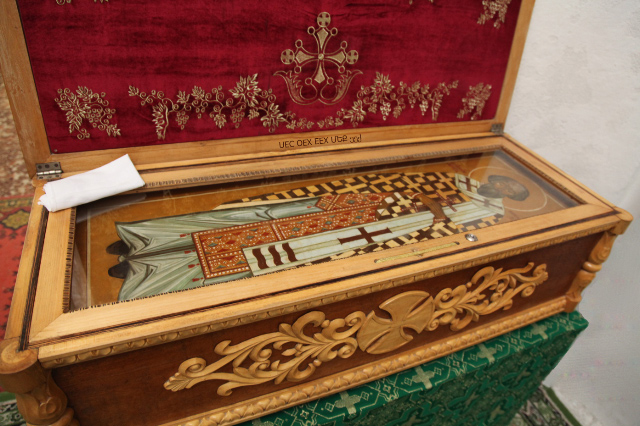 |
|
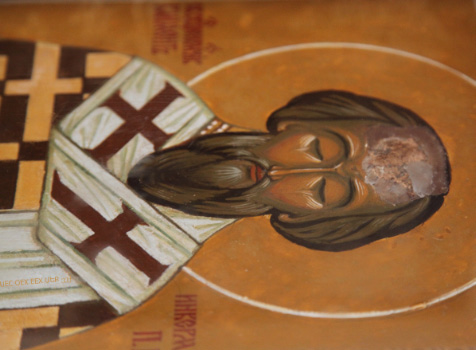 |
| Saint Clement relics in Inkerman |
|
|
|